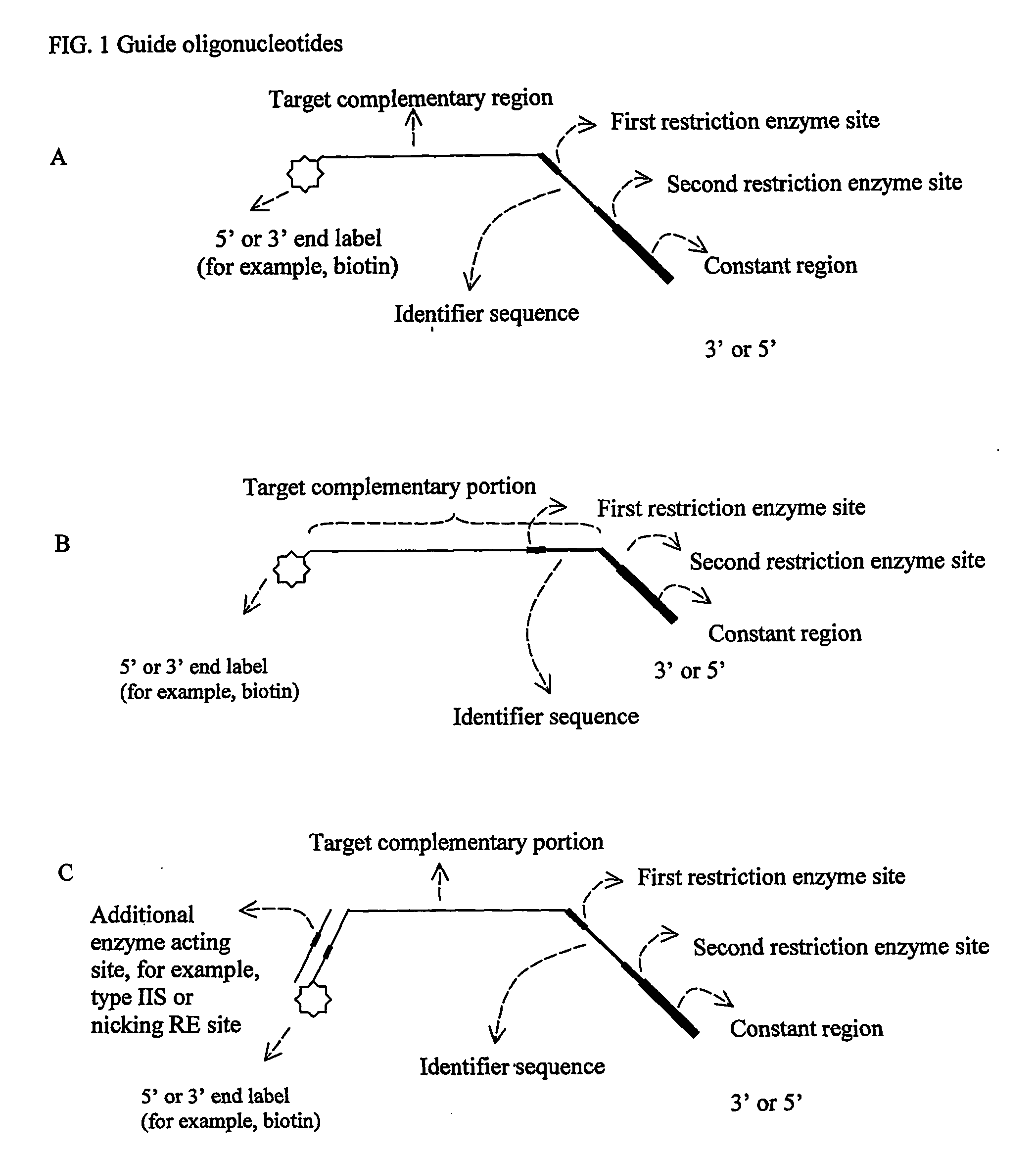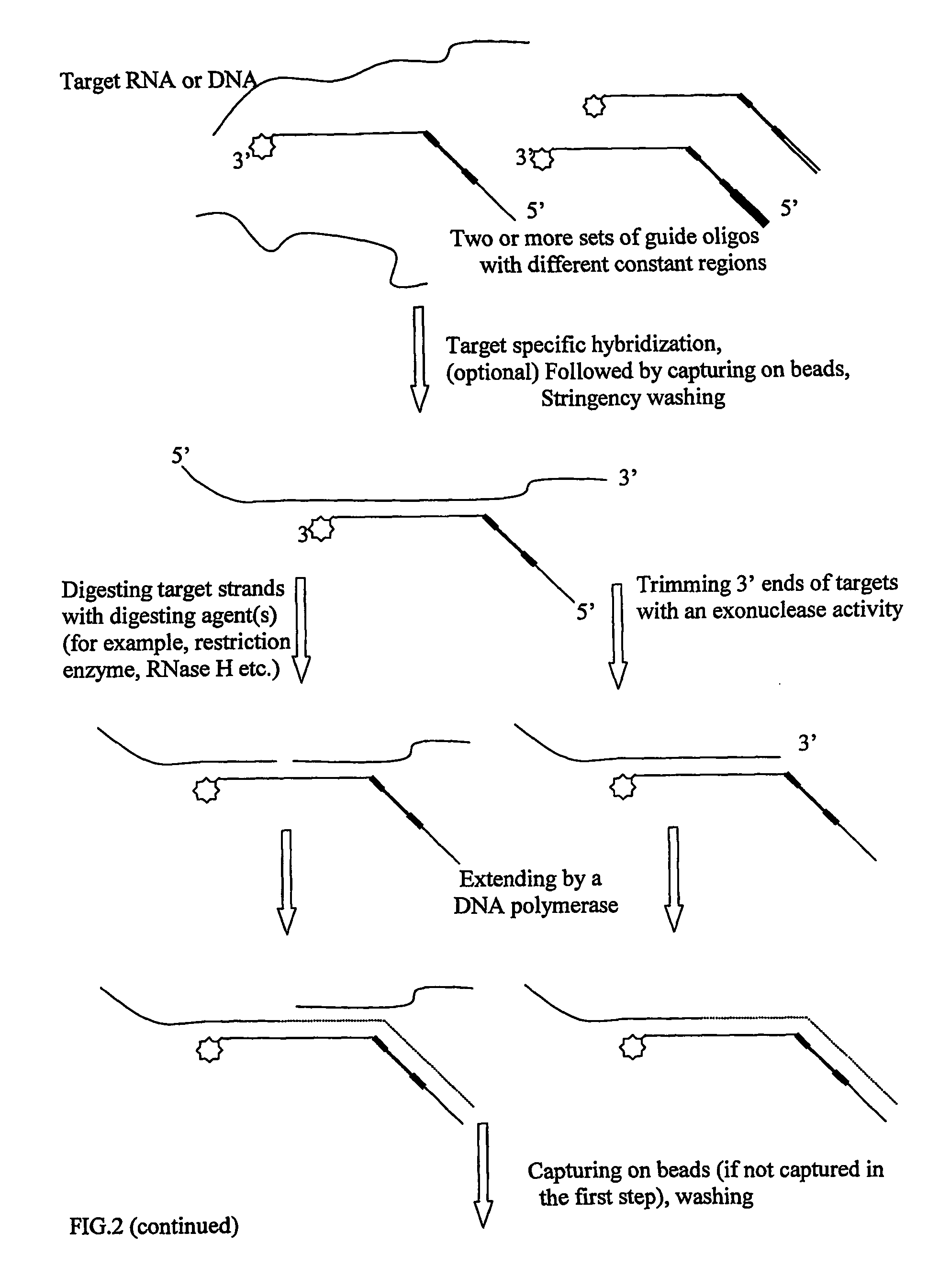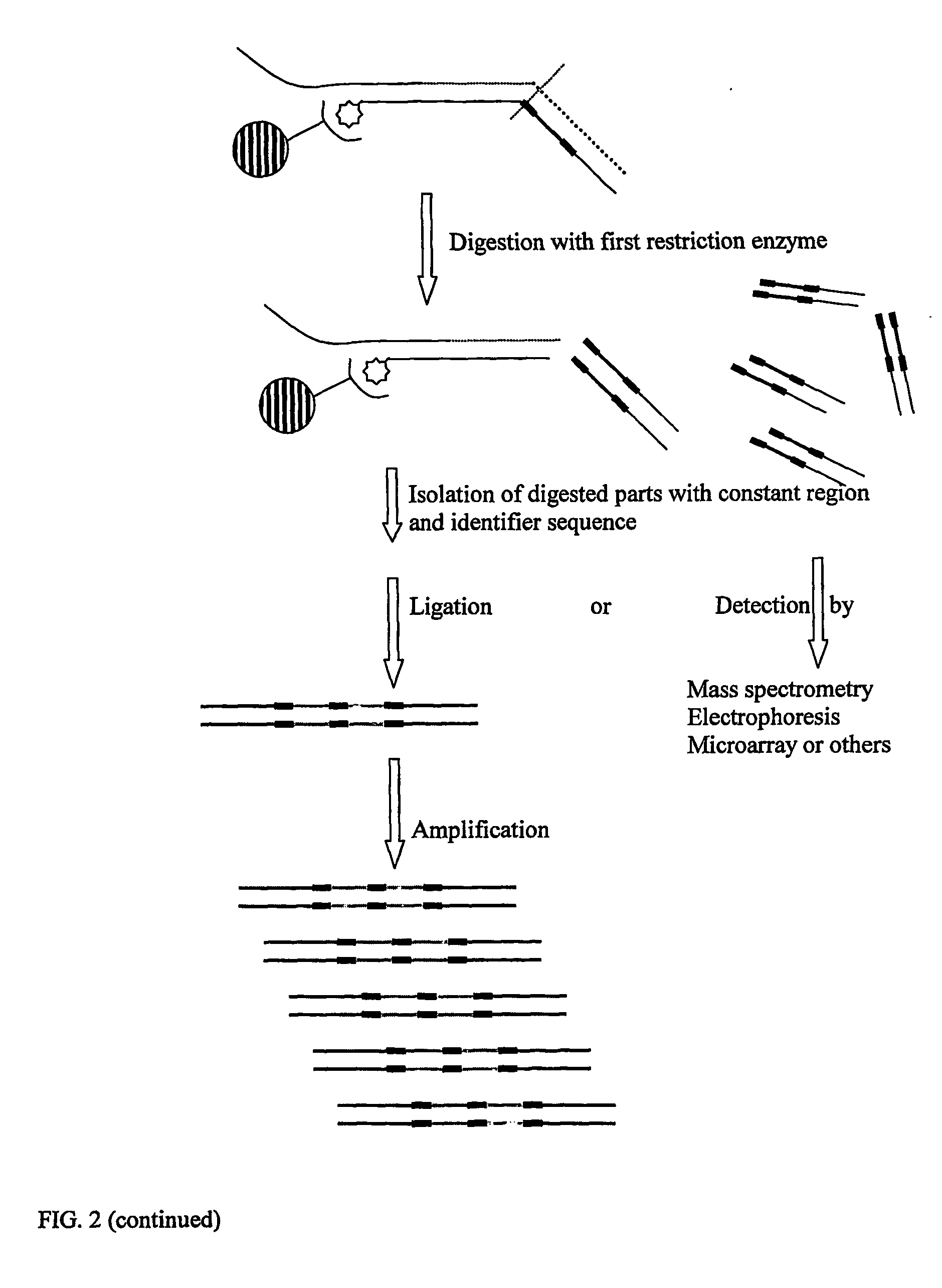Oligonucletide guided analysis of gene expression
- Summary
- Abstract
- Description
- Claims
- Application Information
AI Technical Summary
Benefits of technology
Problems solved by technology
Method used
Image
Examples
examples
[0091] 1 μg mRNA from mouse spleen was converted to first strand cDNA using a BRL cDNA synthesis kit following the manufacturer's protocol, using the primer biotin-5′poly(T)19-3′. After the first strand cDNA synthesis, the mRNA strand was digested by RNase H. The first strand cDNA was divided into two pools, each of which was incubated with a set of guide oligonucleotides under standard hybridization condition. The first set contains the following guide oligos:
GAATTCGAGAACAAAGGAT(J00443)CCACACCCC 3′GAATTCCATCTGTATCGAG(BC042693)ATCTGACTCTGTCTTC 3′GAATTCGAAGCACAGAATG(BC036266)ATCAGGCCTTTAGAGC 3′GAATTCCTGCAGGCGGAGA(BC044785)TCTTCCAGGCCCG 3′GAATTCGAAGGGGTGAAGA(BC002116)TCTCCTTGGAGTC 3′
[0092] The second set contains the following guide oligos:
5′ AAACAAACGGTGGATCAGAATAGCCACGAATTC(BC023197)5′ GATAGGCTGAGATCGAGAAATTCGATAAGAATTC(NM_021278)5′ GAACTGGAAGATCTTCGAGAGCTGGAATTC(NM_010545)5′ CCCGAGGGAGAGATCACGGACTACAGAATTC(NM_020583)5′ CTCCTGGCCATGATCATAGCCCCCATGAATTC(NM_019444)
[0093] Constant ...
PUM
| Property | Measurement | Unit |
|---|---|---|
| Electrical resistance | aaaaa | aaaaa |
| Gene expression profile | aaaaa | aaaaa |
Abstract
Description
Claims
Application Information
 Login to View More
Login to View More - R&D
- Intellectual Property
- Life Sciences
- Materials
- Tech Scout
- Unparalleled Data Quality
- Higher Quality Content
- 60% Fewer Hallucinations
Browse by: Latest US Patents, China's latest patents, Technical Efficacy Thesaurus, Application Domain, Technology Topic, Popular Technical Reports.
© 2025 PatSnap. All rights reserved.Legal|Privacy policy|Modern Slavery Act Transparency Statement|Sitemap|About US| Contact US: help@patsnap.com



